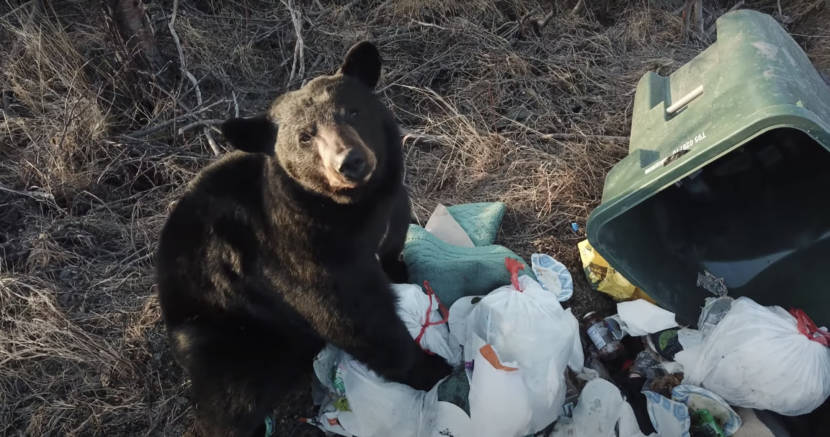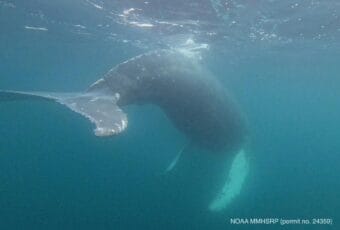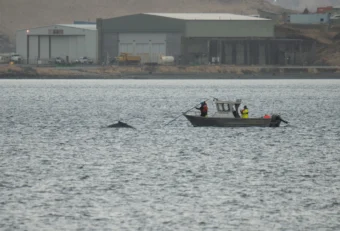
Bears are up and about in Anchorage, and they’re looking for food.
Don Rearden has lived on the Anchorage hillside for 15 years. He was on his way home Sunday night when he saw a pile of garbage out of the corner of his eye.
“Sure enough, there in the brush munching on a big pile of trash was a bear. A really big black bear,” he said.
Rearden, a writer and professor at UAA, has seen a lot of bears over the years near his house, in the aptly named Bear Valley neighborhood. This was the first he spotted this spring.
“I was in my truck and rolled the window down and yelled at it and clapped my hands, and he didn’t even bother to budge. Honked the horn. He wasn’t going anywhere,” Rearden said.
Dave Battle, area management biologist for Alaska Department of Fish & Game, said bears start to come out of hibernation around April. Like Rearden’s bear, they’re drawn into town by the promise of easy snacks from unsecured trash cans and bird feeders.
Battle said along with the Hillside, the Northeast Anchorage neighborhoods around the wooded parts of JBER tend to see a lot of bear traffic.
“Anywhere there is a large park or a greenbelt in the area,” he said. “Bears can move through the greenbelts and through the parks. All of South Anchorage — there’s a lot of green space down there. Girdwood is big. Eagle River is big.”
All residents can request bear-resistant trash cans from their trash service providers, which can help prevent bears from sticking around in neighborhoods, Battle said. Girdwood and Eklutna are currently the municipality’s only “secure trash zones” where bear-proof cans are required. Everywhere else, they’re optional.
“We have some folks that just don’t want to do that — they keep a regular can, they don’t secure it in the garage, even after bears have been into it,” he said.
Residents can be fined more than $300 for “negligently” leaving food or garbage that attracts bears.
“Very often, this does not end well for the bear,” Battle said.
Bears that are frequent visitors can be dangerous, and Fish & Game is sometimes forced to shoot them, Battle said. In previous years, the department has had to put down anywhere from four to 30 problem bears in a season.
If you haven’t already, he said, now is the time to take down bird feeders, clean up any outdoor food waste, including pet food, and ensure trash is stored securely.
If you encounter a bear, you can call or email ADF&G or report it through the department’s website.



